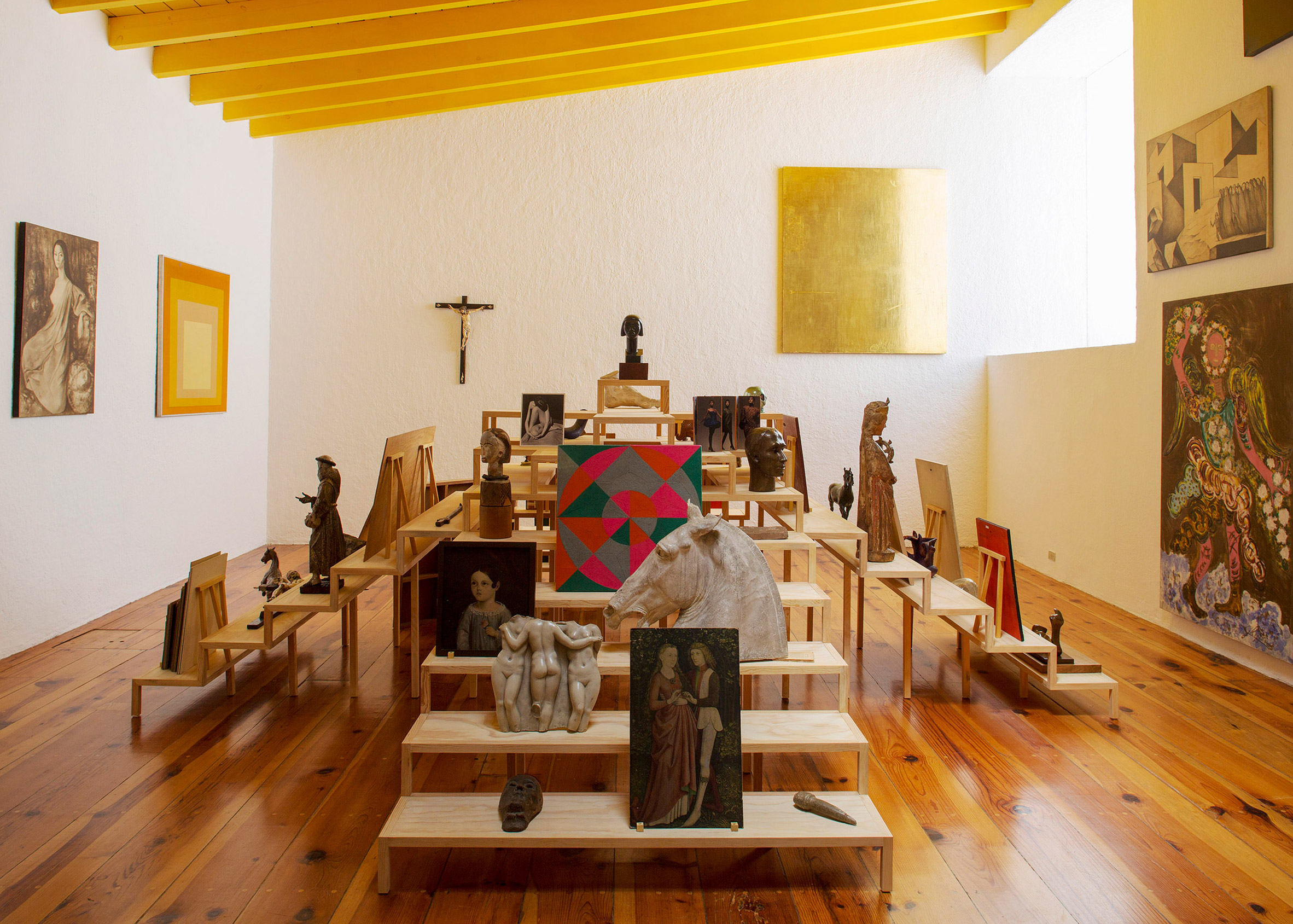Avenida Corona del Rosal
2011 - Painting (Painting)
3 canvas; 47H x 35W inches each
Pablo Rasgado
Pablo Rasgado’s paintings and installations serve as a visual record of contemporary urban human behavior. Rasgado wanders through the urban landscape in Mexico City and other major cities, looking for moments of intrigue in the dirt and debris. He captures these details by extracting materials from the sites and deploying them in the gallery. Raw materials thus become abstract paintings, which are both actively engaged with the site of their origin and politically and socially charged. Avenida Corona del Rosal (2011) is a section of wall extracted from the Mexico City street named in the title. It has been “painted” with an accumulation of byproducts of automobiles—diesel soot, dirt, tire and brake particles—to create an ironically poetic and beautiful portrait of the pollution that ravishes the city.
Pablo Rasgado reconfigures everyday life into new abstractions. Often thinking through architecture, public space, and the sculptural relationship to the human body, his work often carries political or social commentary.
Colors:
Related works featuring themes of: » Found Objects, » Mexico, » Mexican
» see more

© » KADIST
Abraham Cruzvillegas
2004Wright Imperial Hotel (2004) is a sort of bow and arrow made out of feathers, a São Paulo phone book, and other materials...

© » KADIST
Mateo Lopez
2012With Roca Carbón (Charcoal Rock, 2012) and Roca Grafito ( Graphite Rock , 2012), López plays with our relationship to inert and unremarkable objects such as rocks...

© » KADIST
Heman Chong
2012The work Calendars is composed of 1001 images of deserted public areas in Singapore printed on pages of a calendar set from the year of 2020 until 2096...
Other related works, blended automatically
» see more

© » KADIST
Abraham Cruzvillegas
2004Wright Imperial Hotel (2004) is a sort of bow and arrow made out of feathers, a São Paulo phone book, and other materials...

© » KADIST
Pedro Reyes
2005In Reyes’s words, “We should be able to extract the technological nutrients before we excrete our waste...

© » KADIST
Mario Garcia Torres
2005Mario Garcia Torres films a game of Charades among professional actors guessing the former North Korean dictator’s favorite Hollywood films...
Related works sharing similar palette
» see more

© » KADIST
Zhang Kechun
2011Zhang Kechun’s photographic series The Yellow River documents the effects of modernization along the eponymous Yellow River, the second longest in Asia...

© » KADIST
Duane Linklater
2020silentstar, delicacy by Duane Linklater is a replica of a baby pink hoodie that the artist wore as a teenager, embellished with hand-painted elements and band patches...

© » ARTS EQUATOR
Purⓔ《纯ⓔ》: How do we talk about Art Form X? | ArtsEquator Thinking and Talking about Arts and Culture in Southeast Asia ArtsEquator Viewpoints Courtesy of M1 CONTACT July 13, 2020 By Jocelyn Chng (1,800 words, 4-minute read) When I accepted the opportunity to write this piece on Purⓔ 《 纯 ⓔ》 , I did it feeling a bit like a shipwreck survivor re-approaching water for the first time...

© » SLASH PARIS
Guy Leclercq — Épures et couleurs — Dutko / Quai Voltaire Gallery — Exhibition — Slash Paris Login Newsletter Twitter Facebook Guy Leclercq — Épures et couleurs — Dutko / Quai Voltaire Gallery — Exhibition — Slash Paris English Français Home Events Artists Venues Magazine Videos Back Guy Leclercq — Épures et couleurs Exhibition Painting View of the artist’s studio Guy Leclercq Épures et couleurs Ends in 27 days: December 7, 2023 → January 13, 2024 Dutko Gallery is pleased to present from December 7th until January 13th a selection of the most recent works by Belgian artist Guy Leclercq...
Related artist(s) to: Pablo Rasgado » Mariana Castillo Deball, » Adriana Lara, » Amalia Pica, » Clarissa Tossin, » Elena Damiani, » Jens Hoffmann, » Marcelo Cidade, » Mateo López, » Nicolás Bacal, » Nicolás Consuegra
» see more

© » KADIST
Mariana Castillo Deball
2015Taking archaeology as her departure point to examine the trajectories of replicated and displaced objects, “Who will measure the space, who will tell me the time?” was produced in Oaxaca for her exhibition of the same title at the Contemporary Museum of Oaxaca (MACO) in 2015...

© » KADIST
Nicolas Bacal
2008Nicolás Bacal uses everyday materials to evoke systems in his sculptures and installations...

© » KADIST
Clarissa Tossin
2012In Fordlândia Fieldwork (2012), Tossin documents the remains of Henry Ford’s rubber enterprise Fordlândia, built in 1928 in the Brazilian Amazon to export cultivated rubber for the booming automobile industry...

© » KADIST
Mateo Lopez
2012With Roca Carbón (Charcoal Rock, 2012) and Roca Grafito ( Graphite Rock , 2012), López plays with our relationship to inert and unremarkable objects such as rocks...
Related works found in the same semantic group
» see more

© » KADIST
Nora Schultz
2013Halfway between a painting and an installation City Sound of Rug gathers found images, synthetic foam, painted metal plates, and prints placed on the floor...




